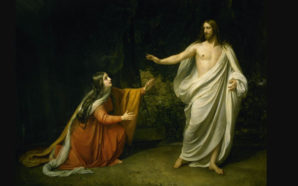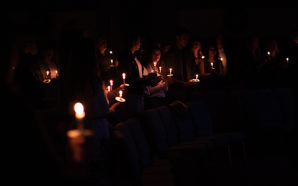On 31 May 2020, on the Feast of Pentecost, consecrated virgins from around the world will celebrate 50 years since the restoration of this ancient vocation and associated ritual (rite) of consecrated virginity.
Pentecost is a very appropriate day to celebrate this anniversary. The founder of the Ordo Virginum, as the vocation is also known, can be said to be the Holy Spirit. Unlike religious orders and secular institutes, there is no one person credited with starting this way of life. The vocation emerged in the second century when women began to consecrate their virginity to Christ, in total devotion to Christ, and in protest against marriage in pagan Roman society.[1] For many, this way of life resulted in martyrdom.
In response to the rapid growth of the vocation, bishops in the early Church formalised consecrated virginity with a short rite in a solemn Eucharistic gathering.[2] It became the first celibate vocation for women. Ascetism, monasticism, religious orders, secular institutes and societies of apostolic life came later. In addition,19n bishops from the early Church in around 350 years wrote about the vocation. Consecrated virgins living in the world were non-existent by about the tenth century.
In the 1900s, the French bishops developed an awareness in the vocation. In 1924, this led to a French woman, Annie Leflaive to receive the consecration. There was growing interest in the vocation in France. As such, Annie Leflaive lobbied Angelo Roncalli (future Pope John XXIII) and Giovanni Montini (future Pope Paul VI) to seek formal recognition of the vocation in the Church. This lobbying, in conjunction with one of the themes of Vatican II, ressourcement, (going back to the sources), led to the rediscovery of the ancient rite. Thus, the first document of Vatican II, Constitution of the Sacred Liturgy (1963), requested restoration of this rite and way of life.[3]
Since the promulgation in 1970 by Pope Paul VI, consecrated virginity has grown where religious life has declined. The vocation continues to increase in Europe and North, Central and South America and parts of Africa. There are also women who are becoming consecrated virgins in dioceses which have never had the vocation before. It is estimated there are over 5,000 consecrated virgins in the world and about nine in Australia.
Today, consecrated virgins are bound by a special bond of love and mutual belonging to the Diocese together with the bishop, priests and deacons.[4] Consecrated virgins dedicate their prayers to the needs of their Diocese.[5] The image of the Church as the Bride of Christ reflects the intimate relationship between Christ and the Church.[6] Consecrated virgins are a sign of the Church as the Bride of Christ.[7]
Consecrated virgins are financially independent, and most are employed in secular jobs. Being in a secular society, they are at the forefront of evangelisation. As such, they can be more accessible to the people because they are where the Church is not.
Until the COVID-19 pandemic emerged, over 700 consecrated virgins from around the world and Australia, were planning to meet in Rome on Pentecost 2020, to celebrate with Pope Francis, the 50th anniversary of the restoration of the rite. We still hope to come together in the future to celebrate with Pope Francis and the Congregation of Consecrated Life and Societies of Apostolic Life.
Still, wherever we are in the world, including in the Diocese of Parramatta, we will join in love and prayer to celebrate this vocation of the Holy Spirit. We will celebrate being the oldest and the newest form of consecrated life in the Church as we pioneer and break new ground for celibate women in the Church.
We will, with your prayers, join in celebration with consecrated virgins from around the world, on this most important anniversary of the Church.
Happy Pentecost!
Zara Tai is a consecrated virgin in the Diocese of Parramatta.
[1] Mary T Malone, Women and Christianity, (New York: Orbis Books, 2001), 114.
[2] James Monti, A Sense of the Sacred (San Francisco, Ignatius Press2012), 580.
[3] Constitution of the Sacred Liturgy 80. https://www.vatican.va/archive/hist_councils/ii_vatican_council/documents/vat-ii_const_19631204_sacrosanctum-concilium_en.html
[4] Instruction “Ecclesiae Sponsae Imago” on the Ordo Virginum, 42 https://press.vatican.va/content/salastampa/en/bollettino/pubblico/2018/07/04/180704d.html.
[5] Instruction “Ecclesiae Sponsae Imago” on the Ordo Virginum, 43.
[6] Instruction “Ecclesiae Sponsae Imago” on the Ordo Virginum, 2.
[7] Instruction “Ecclesiae Sponsae Imago” on the Ordo Virginum, 47.








